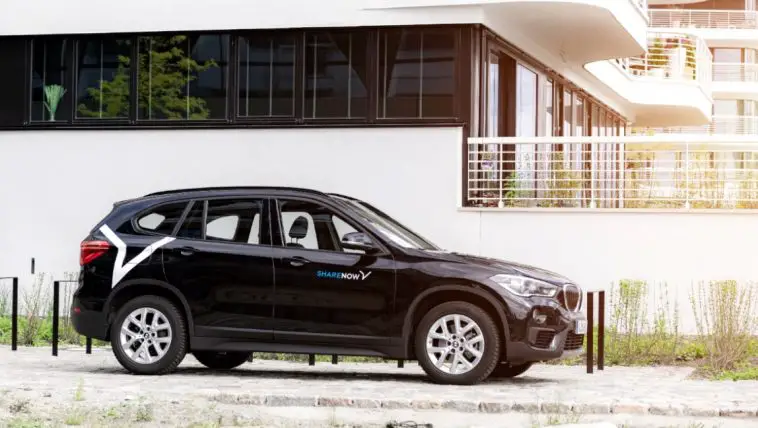In the world of ever-increasing gas prices and the impracticality of owning a motor vehicle in a big city, loads of urban dwellers have embraced carpooling and car-sharing services as one of their main transportation methods. It is much cheaper than driving your own car and connects you with like-minded people from all over the country!
The biggest upside of car-sharing has to be the amount of money you can save on longer trips. Depending on your destination and duration of your stay, it can certainly make an impact on the quality of your summer vacation, as you’ll be able to allocate the funds you’d have otherwise spent on transport, towards something more fun and exciting.
The rise of car-sharing platforms such as Hyrecar or Sixt is bound to redefine the way humans think about transportation and the most effective means of getting from one place to another. Although certain people are and will remain reluctant to give up their own vehicles, things look like they are headed in the direction of the world of car-sharing.
Despite the many advantages of this alternative way of transportation, certain aspects might require you to reconsider this option. You’ll find the most common concerns related to car-sharing, along with an analysis of their legitimacy.
Renting Faulty Vehicles
One of the most common worries people have when they start using a car-sharing service is the quality of available vehicles. After all, it is not uncommon for drivers to get into accidents due to technical elements of their cars going haywire. Every now and then, we hear stories about automobile companies recalling entire fleets of new vehicles due to faulty or outright broken parts.
If you’re planning on using a car-sharing service where the company provides you with their own cars (you can usually tell by how they are plastered with the firm’s logo all over the exterior), you shouldn’t have too much to worry about. Vehicles belonging to a legitimate enterprise are bound by law to undergo frequent inspections and stay in tip-top shape. Additionally, most of these services come with an extensive feedback system, where users can report problems and safety hazards. Such reports lead to those particular machines being taken off the streets until they are fixed.
Long-Distance Drives
This whole digitally maintained system of keeping up with the car’s technical state might be enough for those platforms that are limited to certain cities, but what about longer drives? Say you want to rent a vehicle to go on a vacation, but don’t necessarily want to keep it for the ride back.
Here’s where it gets a little complicated. A lot of the car-sharing and rental services will lend you a car for a long-distance ride, provided that you return it to the same point you took it from at a designated time.
There are, however, certain services that connect riders with car owners who need their vehicles “delivered” to a particular location. Those platforms allow for one-way drives since you’re simply a means of getting their car transported to where they need it to be.
Most of the time, you’ll find the best offers and most flexible deals with the traditional, by-the-airport car rental firms, such as Hertz. They work with massive fleets, but considering their vast client base, it is often the case that they run out of vehicles at particular locations, which is where you can come in and make the trip profitable for both parties.
Driving With Kids & Friends
When it comes to driving with passengers, most platforms that offer up their own machines will not have an issue with it, as long as you’re obeying the local laws and do not exceed the vehicle’s maximum capacity.
As for services that connect drivers to each other, where you borrow somebody else’s car, it all depends on the individual you’re making a deal with. Certain people are very specific about what can or cannot be done in their vehicle, and it is best that you familiarize yourself with these demands before you make the final decision. Even if you think you can get away with breaking the “no eating in the car” rule, you might get caught red-handed by a hidden camera and get penalized for violating the terms of your arrangement.
Insurance Doubts
This is a no-brainer. If you have any doubts about your car-sharing service’s legitimacy or whether the car you’re about to use is properly insured, you should not drive it.
Although it’s difficult to pull off, car-sharing scams remain absolutely within the realms of possibility. This is why you should always use certified applications and services backed up by previous users’ opinions. You don’t want to rent an uninsured car and end up in an accident – not only could you be pressed to cover the costs of repairing that vehicle, but also, in the unfortunate event of injury, your own health insurance plan will most likely not cover medical bills that derive from using illegitimate car-sharing platforms.
Summary
Car-sharing is a viable and affordable alternative to traditional car ownership. It is worth considering, especially if you live in a city and things like parking space and traffic are of concern to you.
It is also an entirely feasible solution for single long-distance rides, provided that you choose the right service.
One of the few situations in which you might want to consider getting your own car rather than utilize sharing platforms is if your job requires you to travel across vast distances on an almost daily basis – the accumulated bill for constantly borrowing vehicles might turn out to be larger than the cost of buying and maintaining a good, used car.



